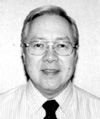The dread of poverty statistics
- Details
- Blog Content
- Hits: 5825
(First published in the February 16, 2013 issue of the Philippine Daily Inquirer)
One reason why many educated people avoid taking regular comprehensive physical examinations, even though they can afford it, is that they dread the discovery of a dire malady. They say they feel fine anyway. They resent being nagged about it, and claim personal responsibility for their health. Their loved ones practically have to drag them to hospital for checkups, lest by the time illness exhibits itself, it has become so expensive, and perhaps impossible, to cure.
In like manner, though the government has proclaimed, since time immemorial, poverty elimination as a key objective, it has tried to avoid facing the facts about it. It has dreaded to see its own poverty statistics.
In the 1950s, the Philippine Statistical Survey of Households (PSSH) had already started. Done roughly every five years up to at least 1971, the PSSH was the forerunner of the current Family Income and Expenditure Surveys (FIES). The government used it to report on income inequality—the Gini ratio was found to be about .50, for example—but refrained from defining a poverty line and estimating the number of poor households.
It fell to academics from the UP School of Economics and the Development Academy of the Philippines to initiate research on poverty lines in the 1970s, apply their constructs to the PSSH data, and discover that poverty was worsening, in both absolute numbers and as a proportion of all households. (See the book I edited, “Measuring Philippine Development,” published by DAP in 1976.) Such academic work was appreciated by some bureaucrats, but not by the Marcos administration as a whole.
During the authoritarian period, the official stance on the poverty situation was that it consisted, at all times, of the bottom 30 percent of households on the income scale. Thus defined, the poverty proportion was officially fixed. It could neither get worse nor get better. “The poor are always with us” was the story. (Except that, in pace with the population, the numbers of the poor grew.)
International development organizations were not encouraging, either. For instance, the United Nations Statistical Office’s catalogue of recommendations stated that a frequency of once in five years would do for a national survey of income or expenditures. The UNSO said it would suffice to estimate poverty only two times during a decade—in contrast to estimating annual gross national product 10 times over the period. This would lay a foundation of data for constructing econometric models on economic growth that are silent about change in poverty—a perfect climate for propagating trickle-down economics.
Once, while I was working on the DAP research, an observing economist from the World Bank or the International Monetary Fund (I forget which) said it was wrong of us to design poverty lines at all, because we would thereby create expectations of income entitlements among the people, and cause public frustration. Thus, poverty research was ipso facto a subversive activity.
Another time, the Philippine Institute for Development Studies turned down my application for funding of poverty research that I would do as a UP faculty member. Later, a high PIDS official, sympathetic to the project, explained to me our bad luck that one board member, a minister close to Marcos, had attended the board meeting whereas usually he was absent. The minister had remarked, “Why should we support research that will only be used to criticize the administration?”
It was only in the time of President Cory Aquino that the government accepted the common sense that poverty cannot be studied without measuring it. The responsibility for measurement was assigned to the National Statistical Coordination Board. The starting point of the first official poverty line was the minimum cost of purchasing food capable of providing the calories and nutrients deemed adequate by the Food and Nutrition Research Institute; this is the so-called food threshold.
However, the minimum budget for other necessities besides food was not separately researched. It was set at that time, and up to now, as the average amount that households at the border of food poverty actually spend on other things besides food, even though there is no assurance that this amount can provide for shelter, clothing and other necessities of minimal nonpoor quality. When added to the food threshold, the result is the total threshold, which defines the general-poor. There are more general-poor than food-poor.
The first official poverty lines were applied to the 1985 FIES. The FIES was fielded every three years from 1985 to 2012, but results for 2012 are not yet ready. Though poverty lines should be maintained over time, they have been revised at least twice: for the 1991 FIES and the 2009 FIES. In both revisions, the lines became stingier, by delisting certain consumption items formerly deemed natural for escaping poverty, like tobacco and meat. For 2009, the latest available FIES year, the estimated proportion of poor households became 21 percent, but would have been 26 percent if the lines had been maintained—cutting poverty by 5 points by mere redefinition.
Now, the current administration pledges to measure poverty annually, starting with reference year 2012, then 2013, and so forth. This is a major move, and will lead to greater understanding of the dynamics of poverty. If only the government had overcome its dread of poverty statistics two or more decades ago…
* * *
 Mahar Mangahas is the president of Social Weather Stations (SWS). Contact SWS: or This email address is being protected from spambots. You need JavaScript enabled to view it..
Mahar Mangahas is the president of Social Weather Stations (SWS). Contact SWS: or This email address is being protected from spambots. You need JavaScript enabled to view it..

